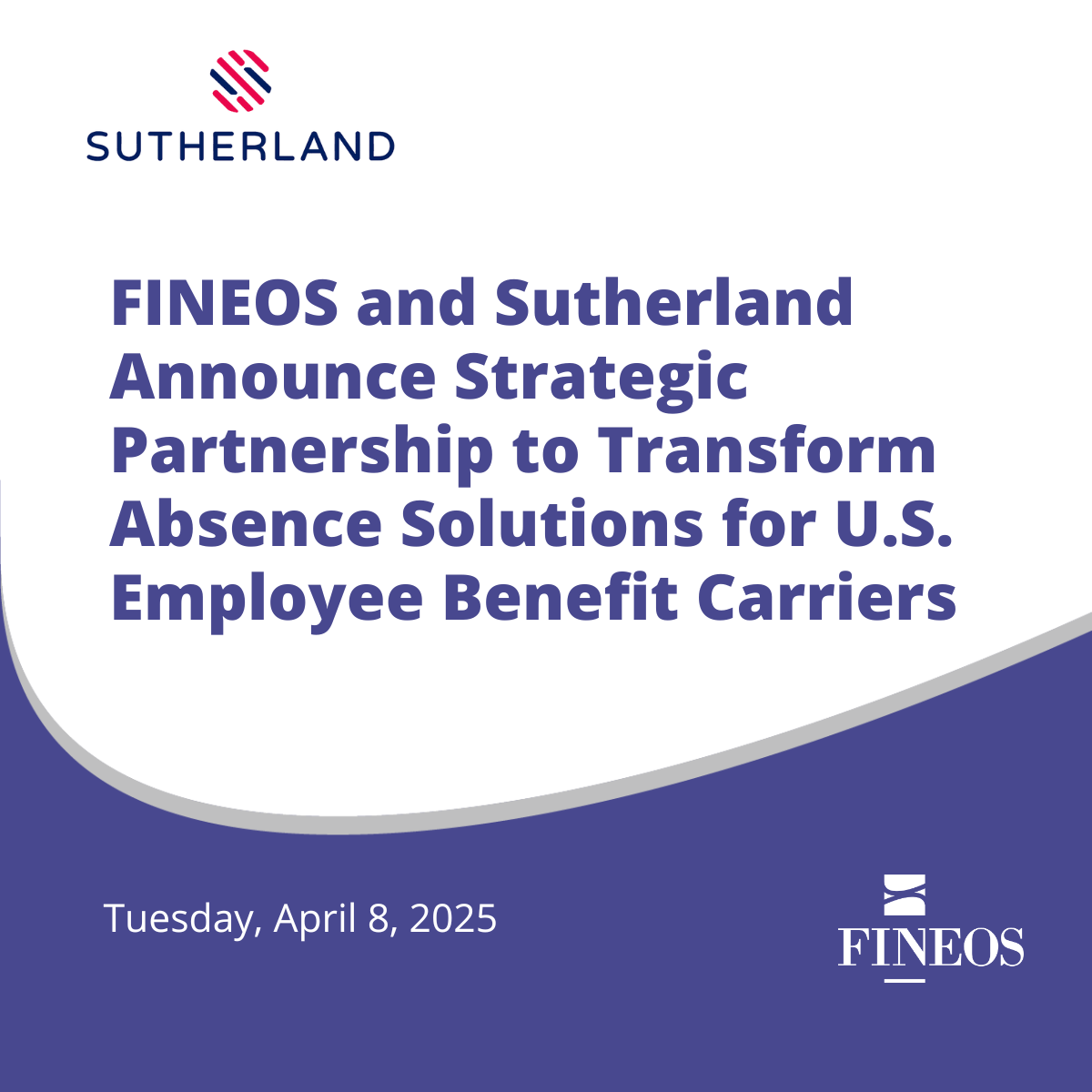Original article appeared in Benefits Pro March 2021
Michael Kelly, CEO & Founder, FINEOS shares how the employee benefits industry is rapidly adapting to provide a greater emphasis on integrated leave management, flexible benefits and digital customer experience.
The employee benefits industry has long been capable of change. Employees, employers and carriers alike have adapted to the prevailing trends of what people value most at any given time.
Now, the changing nature of work and the shifting priorities of employees is being felt by the employer, the carrier and in the way these three entities interact. As a result, we are seeing the employee benefits industry adapting rapidly to meet these demands by providing a greater emphasis on integrated leave management, flexible benefits and digital customer experience. Employers are battling for talent and the employee benefits they offer are an important attraction for their potential employees.
COVID-19 is pushing digital
Every facet of the benefits industry, from the employer, the employee, and the broker through to the carrier, has adapted to a new reality in the face of COVID-19. Namely, in the absence of in-person business taking place, every point of interaction needs to be available and quickly executable remotely. Some carriers have been working towards an all-digital transition for years, but COVID-19 has significantly accelerated the need for delivering an end-to-end solution and consistently superior digital customer experience – from quotations through to claims management.
The COVID-19 pandemic has caused a reevaluation of employee priorities as so many of us have shifted to working from home. In a recent Unum survey of over 400 employers, 56% of them said they will allow their employees the flexibility to work from home even after the pandemic. With a mostly remote workforce for the foreseeable future, the dynamics of work-life balance have been upended and the expectations of employees towards their employers and benefits package has changed.
The digital revolution in the benefits industry is also being accelerated as millennials increasingly occupy the workforce. As a mobile-first generation, carriers that are unable to provide intuitive and instructive mobile interfaces are losing favor compared to those that offer it. Given how regional limitations are dissolving across the workforce in a new work-from-home world, carriers that aren’t offering the capacity for mobile access and a near real-time claims process are getting left behind.
For many carriers, the need for a complete overhaul and replacement of the core systems on which they rely has become starkly apparent. Some carriers rely on mainframe technologies that were prevalent up to 50 years ago, and these legacy core systems are barriers to needed capabilities such as flexible configuration, process automation and digital remote access technologies. These bottlenecks are causing more traditional carriers to evaluate and migrate away from their legacy core systems in favor of more agile SaaS platforms with a focus on standardization, configuration and digital customer experience.
In addition to the challenge of keeping up with today’s shifts and future technology changes, carriers are also struggling to keep pace with translating an ever-changing landscape of state and federal regulations. Ten years ago, there was a trend of carriers buying up TPAs as a strategy to keep up with changing regulation and modern technology changes. Back then, the TPAs had built their own platforms and were keeping them updated, but today, even TPAs are having to reevaluate in-house development of their core systems as they are struggling to keep up.
Greater emphasis on communication
Some of the major components of the COVID-19 pandemic fallout were general confusion and uncertainty about the future. As state and federal quarantine and response measures evolved, it became paramount to create a clear line of communication between carriers, employers, and employees that would serve to delineate benefits at a time when health concerns were at the top of everyone’s mind.
To this end, it was important for vendors and carriers to provide as much information as possible, as quickly as possible, to remove points of friction at every level of the industry.
At a time when employers were dealing with a lot, from layoffs and furloughs to handling the transition to an all-remote workforce, benefits carriers had to step up as a major point of contact to help lighten the load employers were carrying. While COVID-19 was the flashpoint of this need for clear, consistent dialogue, it’s now an essential feature of the system. As employees continue working remotely and market precarity leads to changes in benefits, automation and innovative communication mechanisms are going to be essential for the benefits industry going forward.
Employee and employer priorities have shifted
The other lasting change to the benefits industry born out of the COVID-19 pandemic is a shift in the types of benefits being offered; a change that will impact the industry for the foreseeable future.
According to a recent study by The Hartford, the COVID-19 crisis has taken a toll on the satisfaction levels employees feel towards their offered benefits. As the world has become more concerned with personal health, it stands to reason that benefits packages are being put through more scrutiny than they had before. Prior to the pandemic, 56 percent of employees rated their benefits as above average; a number that dropped to 44 percent just months later. In short, employee priorities are changing with regards to their demands in benefits, and new sectors in the wellness and benefits industry are going to need to expand in order to meet the need.
Employees are increasingly concerned about access to telehealth benefits. In a world defined by remote interactions, the ability for employees to connect with providers in this manner is going to be paramount going forward. Likewise, given the increased stress and anxiety associated with a post-pandemic world, mental and behavioral health services are becoming a much more essential priority for workers.
Along with telehealth and behavioral health, we’re entering a new era of employee assistance programs (EAPs) that work to benefit broader concerns that employees are facing. These concerns include mental health and cognitive behavioral therapy, with additional programs like financial literacy and childcare services. As family obligations shift as a result of the work-from-home lifestyle, employers need to supplement benefits to account for these increased burdens placed on parents.
At the same time, benefits are shifting to accommodate for absence management as a core service-based product. The landscape of short-term and long-term leave is changing, and it’s up to carriers to understand how these programs are evolving on federal and state levels. Concurrently, with a pandemic that has profound effects on the older population, employees are expecting expanded caregiver benefits to account for further family obligations.
Naturally, the market is adapting to meet employee needs, but on the carrier side, it’s becoming essential to offer a complete range of flexible benefits with a focus on preventive care, leave management, early intervention, recovery and return to work support and accommodations. Keeping employees healthier, both mentally and physically, can save carriers much more in the long run through avoiding costly claims payouts. And the addition of absence management into the employee benefits insurance industry gives carriers the opportunity to gain insights into employee well-being and care.
The future is changing faster than ever before
The COVID-19 pandemic has upended nearly every facet of how we view work, right down to the employee benefits being offered. The benefits industry itself is being forced to adapt quickly to this shifting landscape and, unfortunately, the need to modernize is coinciding with a headwind that has already decreased the industry’s income by up to 25%. Access to capital is not as readily available for those looking to make it in this new frontier, which will make the market increasingly more competitive.
The conditions of the pandemic will end sooner than later. But in the aftermath, the landscape of the benefits industry may be radically different from what it was before.
Michael Kelly is CEO & Founder of FINEOS Corporation.


